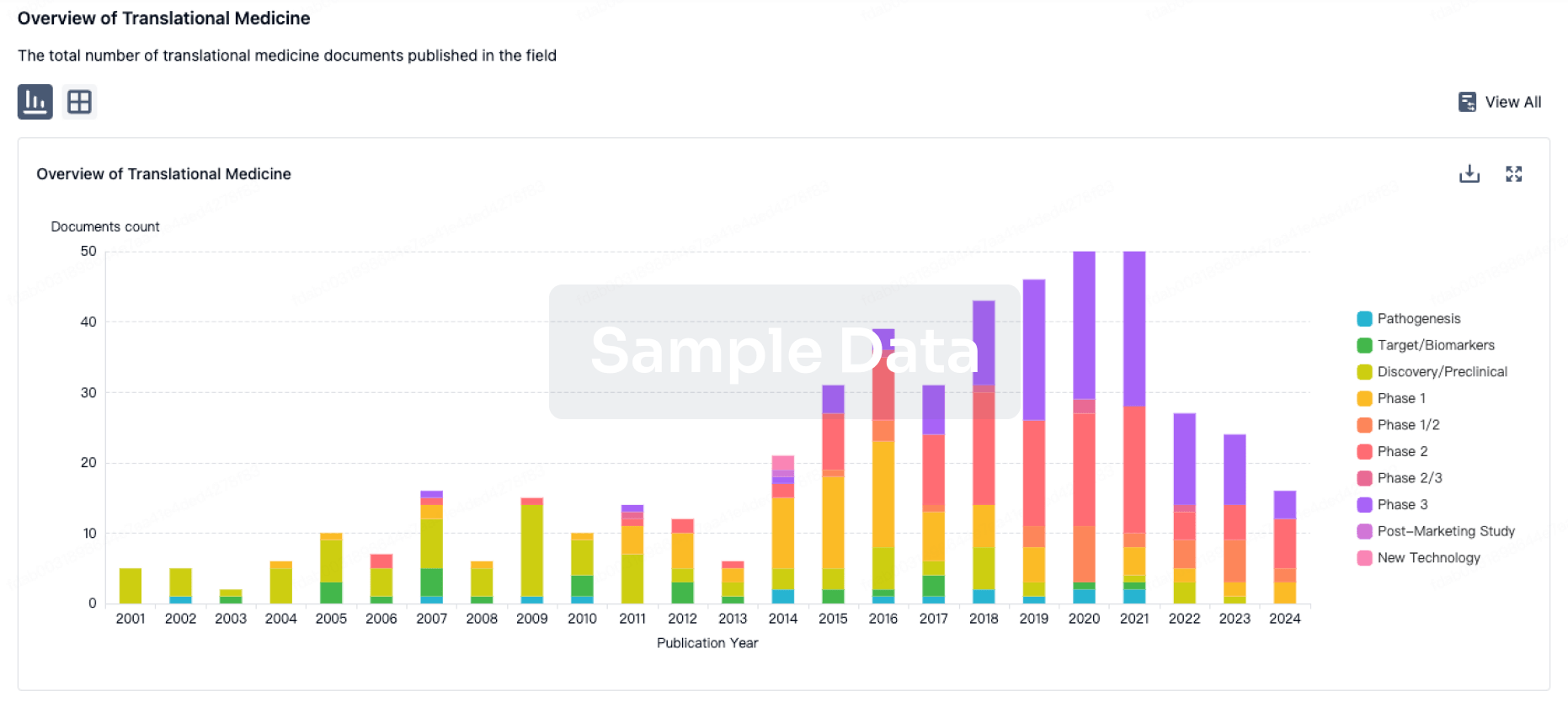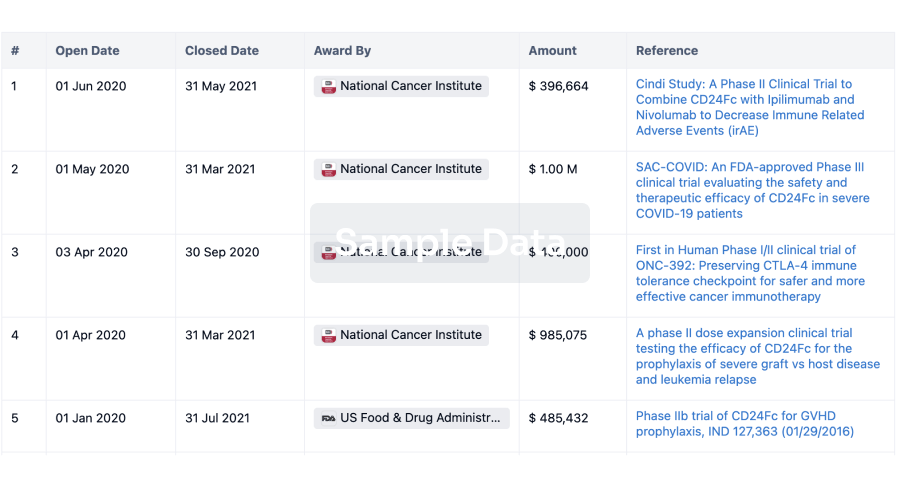Request Demo
Last update 09 Jul 2025

Lake Forest College
Last update 09 Jul 2025
Overview
Related
100 Clinical Results associated with Lake Forest College
Login to view more data
0 Patents (Medical) associated with Lake Forest College
Login to view more data
309
Literatures (Medical) associated with Lake Forest College01 Sep 2025·MOLECULAR AND CELLULAR NEUROSCIENCE
Multiple models of TBI in Drosophila yield common and unique genetic, physiological, behavioral outcomes
Review
Author: Barber, Annika F ; Kelly, Seanna E ; Delventhal, Rebecca
Traumatic brain injury is a significant public health problem, but the complex pathology of TBI has posed a barrier to a molecular understanding of the root causes of post-TBI sequelae. Fruit fly models of TBI offer opportunities to conduct high throughput screens for genes affecting multiple outcomes of TBI. This review provides a primer on fly traumatic injury paradigms, a summary of findings made in fly TBI models, and recommendations for future areas of TBI research amenable to the fly model. Using the whole-animal and head-specific TBI paradigms available in Drosophila, researchers have identified changes in acute mortality and median lifespan, reduction in locomotor function, immune activation, remodeling of metabolic functions and sleep, and acceleration of neurodegenerative phenotypes. Fly TBI models also show effects of age, diet, and sex on injury outcomes. Drosophila genetic tools offer unique advantages for high throughput screening, and fly screens have identified genes that affect acute mortality after injury. Further standardization of fly TBI paradigms will advance the field and allow discovery of genes and biochemical pathways that affect TBI outcomes across species and accelerate the development of evidence-based treatments for TBI survivors.
01 Aug 2025·BEHAVIOURAL PROCESSES
The function of antennation as courtship in bean beetles
Article
Author: Paddon-Jones, Sylvie ; Barbosa, Flavia ; Romanotto, Lia ; Rice, Frances S
During mating, male bean beetles (Callosobruchus maculatus) engage in antennation, a behavior where they rapidly tap the female's back immediately before intromission. Behavioral observations suggest that antennation may function as courtship in this species, but this has not yet been empirically tested. Here we sought to determine the function of antennation by investigating whether females prefer higher antennation intensity. We tested this by measuring and comparing mating behaviors of females who mated with either control males or males where one antenna had been ablated. By ablating one of the male's antennae, we were able to manipulate the female's perception of antennation intensity. We found that when females mated with a single male, the ablation treatment had no effect on the female preference behaviors we measured (latency to copulate, kicking behavior, and clutch size). However, when females were allowed to mate twice, once with a control and once with a manipulated male, we found that females laid more eggs when they mated with a control male. Overall, we found that females show a preference for more intense antennation behavior by increasing their clutch size when they mate multiply. This supports the hypothesis that antennation functions as courtship in this species.
01 Jun 2025·Cell Reports
Vasopressin and oxytocin excite BNST neurons via oxytocin receptors, which reduce anxious arousal
Article
Author: Dabrowska, Joanna ; Berton, Fulvia ; Francesconi, Walter ; Krabichler, Quirin ; Chudoba, Rachel ; Monroy, Lorena M ; Olivera-Pasilio, Valentina ; Grinevich, Valery ; Olson, Susan L
Interoceptive signals dynamically interact with the environment to shape appropriate defensive behaviors. Hypothalamic hormones arginine-vasopressin (AVP) and oxytocin (OT) regulate physiological states, including water and electrolyte balance, circadian rhythmicity, and defensive behaviors. Both AVP and OT neurons project to the bed nucleus of stria terminalis (BNST), which expresses OT receptors (OTRs) and vasopressin receptors, and governs fear responses. However, understanding the integrated role of AVP and OT is complicated by their cross-reactivity and their mutual receptor promiscuity. Here, we provide evidence that the effects of neurohypophysial hormones on BNST excitability are driven by cell-type-specific receptor selectivity and input specificity. We show that OTR-expressing BNST neurons, excited by hypothalamic AVP and OT inputs via OTR, play a major role in regulating BNST excitability, overcoming threat avoidance, and reducing threat-elicited anxious arousal. Therefore, OTR-BNST neurons are perfectly suited to drive the dynamic interactions balancing external threat risk and physiological needs.
5
News (Medical) associated with Lake Forest College24 Apr 2025
DEERFIELD, Ill., April 24, 2025 /PRNewswire/ -- Prominently featured in The Inner Circle, Jeffrey W. Sherman, MD, FACP is acknowledged as a Pinnacle Lifetime Member for his contributions to Medical Innovations and Advocacy.
Dr. Jeffrey W. Sherman, a distinguished figure in the medical field, continues to make significant contributions to healthcare through his expertise in biopharmaceuticals, education, and advocacy.
Continue Reading
Jeffrey W. Sherman, MD, FACP
With a Bachelor's degree in biology from Lake Forest College and an MD from Rosalind Franklin University of Medicine and Science/The Chicago Medical School, Dr. Sherman has undergone rigorous training in internal medicine and infectious diseases. He completed his internship and residency along with a chief residency at Northwestern University and a fellowship in infectious diseases at the University of California-San Francisco (UCSF).
Board-certified in internal medicine and infectious diseases by the American Board of Internal Medicine (ABIM), Dr. Shermans expertise is widely recognized. He is affiliated with prestigious organizations such as the American College of Physicians (FACP), Erie Health Foundation, and Center for Healthcare Innovation (CHI).
Dr. Shermans influence extends beyond clinical research. He has served as a liaison to the FDA Clinical Trial Transformation Initiative (CTTI) Steering Committee and on the Board of Advisors of the Center for Information and Study on Clinical Research Participation (CISCRP), shaping policy and advancing clinical research methodologies. His philanthropic efforts include involvement with the Global Genes Medical and Scientific Advisory Board and engagement with the National Organization for Rare Diseases (NORD) and the European Organization for Rare Diseases (EURORDIS), highlighting his commitment to addressing rare diseases.
Throughout his career, Dr. Sherman has been dedicated to developing new medicines and advocating for patients with rare diseases. He attributes his success to the support of his mentors, Dr. Lewis Smith at Northwestern and Dr. John Alexander at Searle, and his unwavering dedication to his family.
When not immersed in his work, Dr. Sherman enjoys spending time with his grandchildren, finding joy in family moments.
Reflecting on his journey, Dr. Sherman embraces the philosophy of "never say never", and "patients come first", embodying resilience and determination in his pursuit of medical innovation and advocacy.
Contact: Katherine Green, 516-825-5634, [email protected]
SOURCE The Inner Circle
WANT YOUR COMPANY'S NEWS FEATURED ON PRNEWSWIRE.COM?
440k+
Newsrooms &
Influencers
9k+
Digital Media
Outlets
270k+
Journalists
Opted In
GET STARTED
Executive Change
05 Nov 2024
DEERFIELD, Ill., Nov. 5, 2024 /PRNewswire/ -- Prominently featured in The Inner Circle, Jeffrey W. Sherman, MD, FACP is acknowledged as a Pinnacle Lifetime Member for his contributions to Medical Innovations and Advocacy.
Dr. Jeffrey W. Sherman, a distinguished figure in the medical field, continues to make significant contributions to healthcare through his expertise in biopharmaceuticals, education, and advocacy.
Continue Reading
Jeffrey W Sherman
With a Bachelors degree in biology from Lake Forest College and an MD from Rosalind Franklin University of Medicine and Science/The Chicago Medical School, Dr. Sherman has undergone rigorous training in internal medicine and infectious diseases. He completed his internship and residency along with a chief residency at Northwestern University and a fellowship in infectious diseases at the University of California-San Francisco (UCSF).
Board-certified in internal medicine and infectious diseases by the American Board of Internal Medicine (ABIM), Dr. Shermans expertise is widely recognized. He is affiliated with prestigious organizations such as the American College of Physicians (FACP), Erie Health Foundation, and Center for Healthcare Innovation (CHI).
Dr. Shermans influence extends beyond clinical research. He has served as a liaison to the FDA Clinical Trial Transformation Initiative (CTTI) Steering Committee and on the Board of Advisors of the Center for Information and Study on Clinical Research Participation (CISCRP), shaping policy and advancing clinical research methodologies. His philanthropic efforts include involvement with the Global Genes Medical and Scientific Advisory Board and engagement with the National Organization for Rare Diseases (NORD) and the European Organization for Rare Diseases (EURORDIS), highlighting his commitment to addressing rare diseases.
Throughout his career, Dr. Sherman has been dedicated to developing new medicines and advocating for patients with rare diseases. He attributes his success to the support of his mentors, Dr. Lewis Smith at Northwestern and Dr. John Alexander at Searle, and his unwavering dedication to his family.
When not immersed in his work, Dr. Sherman enjoys spending time with his grandchildren, finding joy in family moments.
Reflecting on his journey, Dr. Sherman embraces the philosophy of "never say never", and "patients come first", embodying resilience and determination in his pursuit of medical innovation and advocacy.
Contact:
Katherine Green
516-825-5634
[email protected]
SOURCE The Inner Circle
WANT YOUR COMPANY'S NEWS FEATURED ON PRNEWSWIRE.COM?
440k+
Newsrooms &
Influencers
9k+
Digital Media
Outlets
270k+
Journalists
Opted In
GET STARTED
Executive Change
11 Jun 2024
DEERFIELD, Ill., June 11, 2024 /PRNewswire/ -- Prominently featured in The Inner Circle, Jeffrey W. Sherman, MD, FACP is acknowledged as a Pinnacle Lifetime Member for his contributions to Medical Innovations and Advocacy.
Dr. Jeffrey W. Sherman, a distinguished figure in the medical field, continues to make significant contributions to healthcare through his expertise in biopharmaceuticals, education, and advocacy.
Continue Reading
Jeffrey W. Sherman
With a Bachelor's degree in biology from Lake Forest College and an MD from Rosalind Franklin University of Medicine and Science/The Chicago Medical School, Dr. Sherman has undergone rigorous training in internal medicine and infectious diseases. He completed his internship and residency at Northwestern University and a fellowship in infectious diseases at the University of California-San Francisco (UCSF).
Board-certified in internal medicine and infectious diseases by the American Board of Internal Medicine (ABIM), Dr. Sherman's expertise is widely recognized. He is affiliated with prestigious organizations such as the American College of Physicians (FACP), Erie Health Foundation, and Center for Healthcare Innovation (CHI).
Dr. Sherman's influence extends beyond clinical practice. He has served as a liaison to the FDA Clinical Trial Transformation Initiative (CTTI) Steering Committee and on the Board of Advisors of the Center for Information and Study on Clinical Research Participation (CISCRP), shaping policy and advancing clinical research methodologies. His philanthropic efforts include involvement with the Global Genes Medical and Scientific Advisory Board and engagement with the National Organization for Rare Diseases (NORD) and the European Organization for Rare Diseases (EURORDIS), highlighting his commitment to addressing rare diseases.
Throughout his career, Dr. Sherman has been dedicated to developing new medicines and advocating for patients with rare diseases. He attributes his success to the support of his mentors, Dr. Lewis Smith at Northwestern and Dr. John Alexander at Searle, and his unwavering dedication to his family.
When not immersed in his work, Dr. Sherman enjoys spending time with his five grandchildren, finding joy in family moments.
Reflecting on his journey, Dr. Sherman embraces the philosophy of "never say never," and "patients come first," embodying resilience and determination in his pursuit of medical innovation and advocacy.
Contact: Katherine Green, 516-825-5634, [email protected]
SOURCE The Inner Circle
Executive Change
100 Deals associated with Lake Forest College
Login to view more data
100 Translational Medicine associated with Lake Forest College
Login to view more data
Corporation Tree
Boost your research with our corporation tree data.
login
or

Pipeline
Pipeline Snapshot as of 05 Aug 2025
No data posted
Login to keep update
Deal
Boost your decision using our deal data.
login
or

Translational Medicine
Boost your research with our translational medicine data.
login
or

Profit
Explore the financial positions of over 360K organizations with Synapse.
login
or

Grant & Funding(NIH)
Access more than 2 million grant and funding information to elevate your research journey.
login
or

Investment
Gain insights on the latest company investments from start-ups to established corporations.
login
or

Financing
Unearth financing trends to validate and advance investment opportunities.
login
or

AI Agents Built for Biopharma Breakthroughs
Accelerate discovery. Empower decisions. Transform outcomes.
Get started for free today!
Accelerate Strategic R&D decision making with Synapse, PatSnap’s AI-powered Connected Innovation Intelligence Platform Built for Life Sciences Professionals.
Start your data trial now!
Synapse data is also accessible to external entities via APIs or data packages. Empower better decisions with the latest in pharmaceutical intelligence.
Bio
Bio Sequences Search & Analysis
Sign up for free
Chemical
Chemical Structures Search & Analysis
Sign up for free